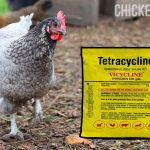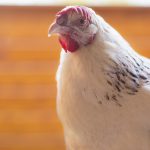Egg Yolk Peritonitis In Chickens: Symptoms, Treatment & Practical Tips
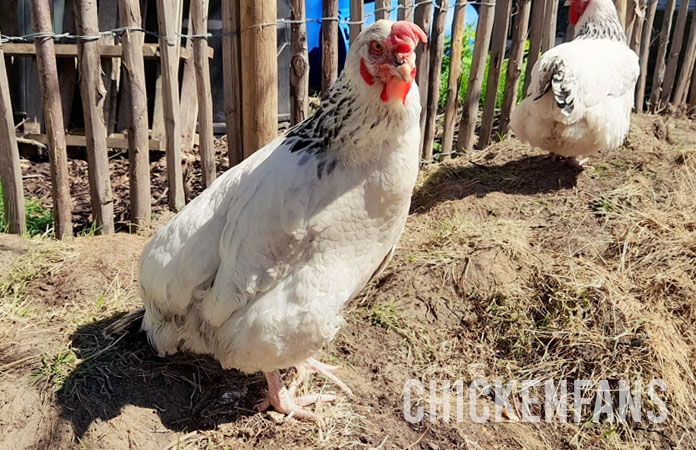

Chicken Fans is reader-supported. When you buy through our links, we may earn a commission. Learn more about our privacy policy and disclaimer.
If one of your chickens has ever been egg-bound, you are probably well aware of the high risk of egg yolk peritonitis. But what is egg yolk peritonitis? Is it dangerous or treatable? And, more importantly, how can you prevent egg yolk peritonitis?
Let’s find out.
- What is egg yolk peritonitis?
- Understanding egg yolk peritonitis
- Symptoms
- Causes
- Treatment
- Prevention
What is Egg Yolk Peritonitis?
Egg yolk peritonitis (EYP) is an inflammation of the membrane covering the internal organs (peritoneum) caused by the spillage of egg yolk in the body cavity (coelom) instead of the chicken’s oviduct. It’s a serious condition that makes chickens sit upright like penguins and can be fatal. [NIH]
This may sound too technical, so let’s explain the process.
Understanding Egg Yolk Peritonitis
When a chicken produces an egg, its ovary produces the egg yolk (ova) and delivers it to the infundibulum, the first part of the oviduct.
If everything goes well, the infundibulum catches the yolk and ships it along the rest of the reproductive tract. Eventually, the yolk is transformed into a full-grown egg and expelled.
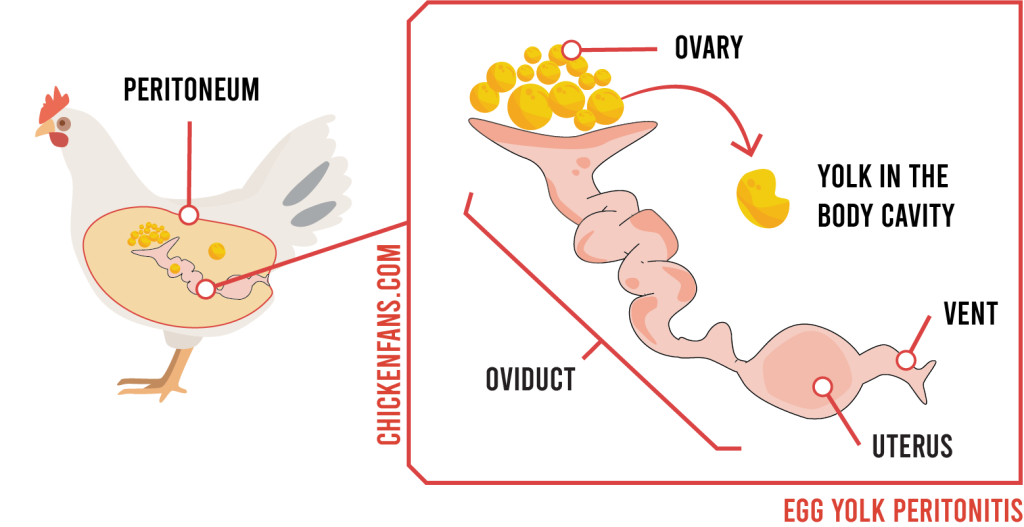
Egg yolk peritonitis occurs when the infundibulum fails to catch the yolk, so it ends up in the internal organs instead of the oviduct. The yolk can also leak in the abdomen when the egg (full-grown or not) breaks somewhere in the oviduct.
If this happens occasionally, there is no issue: the body absorbs the yolk in a mild inflammatory response, which solves the problem.
If it’s recurrent, the egg yolk can trigger an intense inflammatory reaction in the membranes surrounding the internal organs. That inflammation is called peritonitis. Since egg yolks cause it, it’s called egg-related peritonitis or egg yolk peritonitis.
The inflammation causes a build-up of fluids. This enlarges the abdomen, which causes a lot of discomfort for the chicken. They stop laying, get breathing problems and stand upright like penguins in an attempt to get some relief.
Secondary Infections
On its own, the yolk is not infectious, and egg yolk peritonitis is usually without microbial or viral infection.
However, the presence of the yolk can result in secondary viral, parasitic, or bacterial infections. When yolk from broken eggs leaks into the cavity, the usual suspects can cause a bacterial infection (e.g., E. coli, Streptococcus sp., Klebsiella sp.).
Several viruses, like encephalitis and polyomavirus, can also cause inflammation of the membranes lining the chicken’s body cavities (viral serositis).
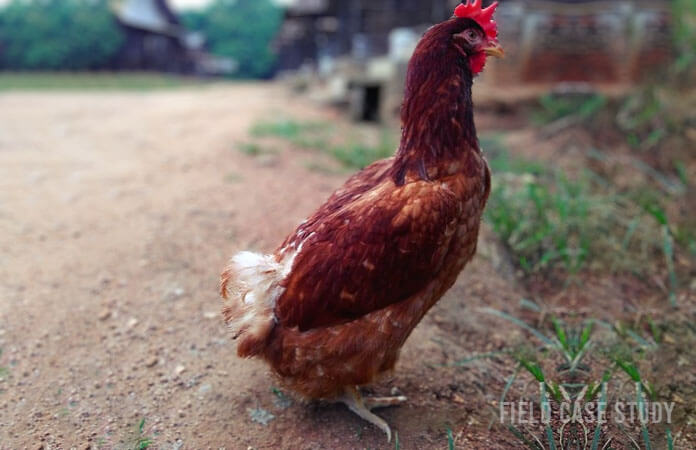
Symptoms of Egg Yolk Peritonitis
Signs and symptoms of egg yolk peritonitis include:
- penguin-like stance
- waddling gait
- enlarged, hard abdomen
- fewer eggs or no eggs at all
- difficulty breathing
- soft-shelled eggs
- malformed eggs, often elongated
- lethargic, calm, sitting in the coop
- decreased appetite
Chickens with egg yolk peritonitis stop laying eggs or at least decrease egg production. If they continue to lay, the eggs are usually thin-shelled, soft-shelled, or otherwise deformed.
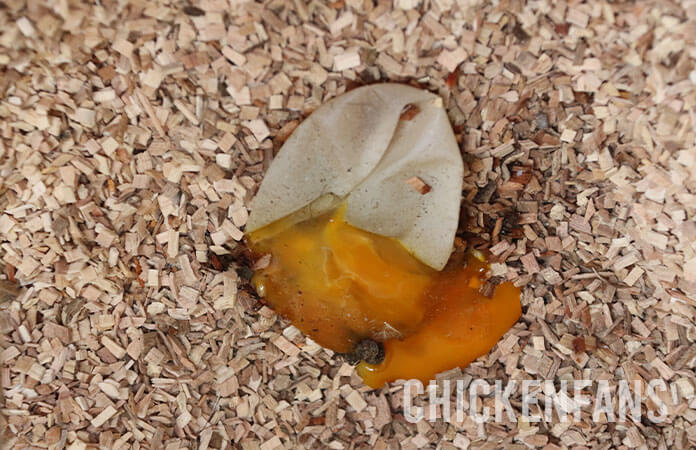
As the situation advances, the chicken will develop pale comb/wattle, fecal smearing around the vent, and poor feather condition. It will also experience weight loss.
Secondary viral and bacterial infections and illnesses can result from egg yolk peritonitis causing extra symptoms; these include:
- pancreatic diseases such as diabetes
- liver inflammation (hepatitis)
- kidney inflammation (nephritis)
- inflammation of the spleen
- coelomic adhesion (organs stuck together)
Causes of Egg Yolk Peritonitis
Egg yolk peritonitis usually occurs simultaneously or as a complication to certain reproductive conditions, such as:
- Egg Binding: Bound eggs are sensitive to breaking, in which case the yolk leaks into the chicken’s abdomen. Go to our Egg Binding in Chickens article to learn more.
- Salpingitis: Inflammation of the oviduct usually caused by bacteria from the cloaca or vent.
- Impacted Oviduct: Accumulation of too much egg material in the oviduct, usually due to chronic salpingitis.
- Cystic Ovarian Disease: Fluid-filled sacs that are likely in older chickens and, when large, cause issues with egg production.
- Ovarian Tumors: Tumors of the ovaries are quite common, especially in high-egg-producing breeds.
Egg yolk peritonitis can occur in laying hens of all ages and in any environment. However, studies show that it is more common in:
- Young chickens overly exposed to artificial light
- Stressed chickens (crowded or unhygienic habitat)
- Broilers and laying hens living on factory farms
- Roughly handled chickens
Due to years of selective breeding, chickens are genetically disposed to lay (too) many eggs, which results in many double yolks, large yolks, soft-shelled eggs, and sometimes chickens laying two eggs a day. All these things go hand in hand with the increased risk of egg yolk peritonitis.
Diagnosis of Egg Yolk Peritonitis
Although the symptoms are easy to recognize, diagnosing a living chicken is difficult. The condition is usually diagnosed after the chicken dies. Only a vet can make a correct diagnosis of egg yolk peritonitis.
A blood test will usually reveal an elevated white blood cell count. Egg-laying hens may also have above-normal calcium levels in their blood.
When the fluid is extracted from the body, it’s usually brown to yellow-pink. Microscopic examination of the fluid reveals white blood cells and small drops of pink yolk.
A vet can also use ultrasound to determine whether the belly fluid is in the body cavity rather than organs.
Based on these tests, the vet will establish a diagnosis and differentiate the issue from other conditions with similar symptoms, such as fowl cholera, egg binding, and Salmonella infections.
Treatment of Egg Yolk Peritonitis
The treatment for egg yolk peritonitis depends on the severity of the condition.
Milder cases can be treated with the following:
- Anti-Inflammatories (NSAIDs): For inflammation management
- Supportive Care: Isolating the hen and providing easy food/water access
In more severe cases, if there is an infection, the chicken needs more aggressive supportive care (intravenous fluids and oxygen therapy) and anti-inflammatories combined with:
- Fluid Drain: To decrease the abdominal distension
- Analgesics: To relieve the pain and provide comfort
- Antibiotics: to prevent and cure secondary infections
- Hormones: To stop egg production & avoid complications (leuprolide acetate, deslorelin)
- Salpingohysterectomy: Surgical removal of the oviduct
- Ovariectomy: surgical removal of the ovary is possible but dangerous and not recommended
Post-surgery complications with ovulation are typical, so gonadotropin-releasing hormones are recommended to control egg-laying.
Prevention of Egg Yolk Peritonitis
Egg Yolk Peritonitis is not 100% preventable.
Here are some things you can do to lower the risk of egg yolk peritonitis:
- provide enough space for the chickens (use the coop size calculator when in doubt)
- don’t add extra light during the evening
- handle the hens carefully
- be gentle when you walk among the chickens
When the egg develops in the oviduct, the yolk is held together by a thin, fragile vitelline membrane. Rough handling of the hens or overly active pullets can rupture the wall and cause problems.
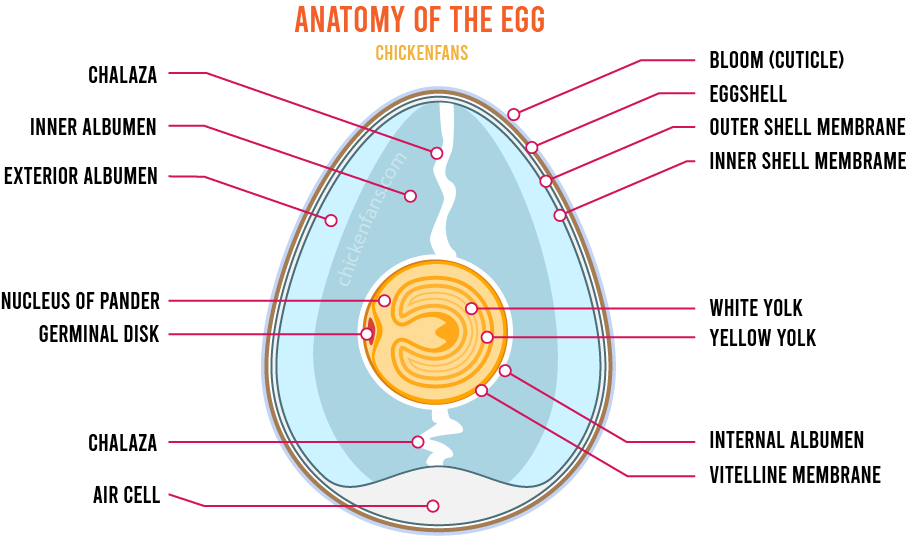
If a chicken is prone to egg yolk peritonitis or has an underlying condition that increases the risk, you can ask the vet to give a hormone injection (leuprolide acetate) or implant (deslorelin) that will cease egg production for several months.
A veterinarian can surgically remove the oviduct if you want a permanent solution.
Summary
Egg yolk peritonitis is a potentially life-threatening inflammation of the chicken’s peritoneum. It usually develops secondary to reproductive issues.
The signs and symptoms of EYP are non-specific; therefore, by the time the diagnosis is made, the condition is advanced and, in many cases, fatal.
Careful monitoring of your flock and early intervention is the key to successfully treating egg yolk peritonitis.
Further Reads
- Egg Bound Chicken: egg binding in chickens is when an egg gets physically stuck inside the oviduct, usually between the shell gland and the cloaca
- Chicken Reproductive System: a full overview of the organs that play a role in the reproductive system
- Chicken Egg Anatomy: the components and internals of a chicken egg
- Water Belly in Chickens (Ascites): Water belly in chickens is a serious condition where an accumulation of body fluid in the abdominal cavity causes the belly to swell.
Frequently Asked Questions
Yes, egg yolk peritonitis is a life-threatening condition. If not treated promptly and adequately, chickens with Egg Yolk Peritonitis can die.
Egg binding is a condition where an egg gets physically stuck inside the oviduct. Egg yolk peritonitis is a condition where the yolk gets out of the oviduct inside the body cavity, which causes inflammation of the membrane that wraps the organs.
Yes, you can eat eggs from chickens with egg yolk peritonitis unless they are treated with medication like antibiotics and hormone therapy.
Egg yolk peritonitis is a condition where the yolk gets out of the oviduct inside the body cavity, which causes inflammation with liquids filling the belly. Water Belly (Ascites) is a heart condition where the chicken’s heart can’t cope with its rapid growth, and increased blood pressure causes fluids to leak into the belly (ascites) and lungs, which can be fatal.

Dr. I. Crnec is a licensed veterinarian with several years of experience. She has published work on the effect of vitamin supplementation, egg-laying performances of chickens under heat-stress conditions and the effects of calcium supplementation on eggshell strength.



